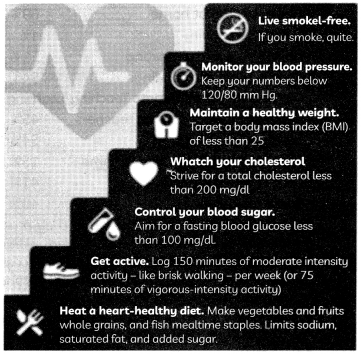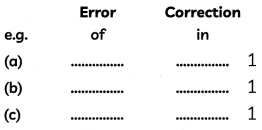Students can access the CBSE Sample Papers for Class 10 English with Solutions and marking scheme Term 2 Set 6 will help students in understanding the difficulty level of the exam.
CBSE Sample Papers for Class 10 English Term 2 Set 6 for Practice
Time Allowed: 2 Hours
Maximum Marks: 40
General Instructions:
- The Question Paper contains THREE sections—READING, WRITING & GRAMMAR and LITERATURE.
- Attempt questions based on specific instructions for each part.
Section – A
Reading [10 Marks]
Question 1.
Read the passage given below.
Once upon a time, there lived a young boy named Sammy. He was good at studies, obedient towards his elders, more hardworking than a lot of other boys in his class and kind to everyone. Grown-ups as well as those younger than Sammy loved him very much. This aroused jealousy in some boys who longed to be as loved as him. A boy named Timmy studied in the same class as Sammy.
5. Unlike Sammy, he was not good at studies and always liked to play during school hours. He misbehaved with his parents, bullied his classmates and even ill-treated Sammy. He always tried to put Sammy down and belittled him before the other kids in class. But no matter what he did, Sammy’s grades kept getting bette. Whether in studies or in sports, Sammy kept getting accolades from everywhere. On his eighth birthday, Sammy got a beautiful pen as a gift from his parents.
10. He brought it to the school so that he could use it to take down the notes of the lectures that the teachers gave in class. When Timmy saw it, he felt jealous.
He asked Sammy, “Hey, where did you get that? Did you buy it?” “My parents gave it as a birthday gift to me,” replied Sammy. Timmy was overcome with anger and jealousy. The bad boy that he was, rarely got any presents from his parents. He decided to steal Sammy’s pen.
15. During recess, when everyone had gone out from the class, Timmy opened Sammy’s bag and took out his pen. Then he hid it inside his bag and went out to have his lunch. When Sammy came back and could not find his pen, he informed his class teacher about it. The class teacher ordered the class monitor to check every student’s bag. The missing pen was soon found from Timmy’s bag and the furious teacher asked the errant boy, “Now Timmy, what do you have to say about this?” 20. Timmy was in tears. He had nothing to say. When Sammy saw Timmy cry, he felt pity on the boy. The kind boy that he was, Sammy had no ill-feeling against his classmate. He requested his class teacher not to take any action against Timmy, now that his stolen pen was found.
On the basis of your understanding of the passage, answer ANY FIVE questions from the following. (1 × 5)
(A) What do you infer about Sammy in the following context, “He requested his class teacher not to take any action against Timmy, now that his stolen pen was found.” (1)
(B) Rewrite the following sentence by replacing the underlined phrase with a word that means the same from lines 1-10.
The wonders of nature always cause to increase my feelings towards the secret behind them. (1)
(C) State any two reasons behind Timmy’s action of stealing. (1)
(D) Why do you think Sammy forgave Timmy? (1)
(E) List one likely impact of Sammy’s kind behaviour towards Timmy. (1)
(F) Which of these quotes best justifies the central idea of the passage? Give reason.
(i) Surely it is much more generous to forgive and remember, than to forgive and forget.
(ii) A misbehaving child is a discouraged child. (1)
Question 2.
Read the following excerpt from a case study titled ‘Challenges of Remote Teaching’.
The rapid shift to e-learning, prompted by the pandemic, has exposed long-standing issues of inequality and a digital divide in India that must be addressed by future economic, education and digitalization policies. While the government endorses India as the flag-bearer of the digital revolution and acknowledges that it is a diverse and multilingual country, e-learning platforms
5. cannot replicate the various dialects, varied contexts and different lived experiences that are brought together by physical classrooms. If e-learning is to be the ‘new normal’, the NEP and related policies must go further to address the feasibility of digitalization to ensure equity and quality in education. The potential scope of e-learning is enormous and can help realize the potential of each student, but e-learning offers both opportunities and challenges for the
10. government and the private sector. The aim should be to ensure equal and adequate access to such platforms as the country continues to globalize and catch up with advanced economies. If the Indian education system aims to transit to blended education with more online learning in future, it must emphasize policies that bridge the digital divide and move the country closer to achieving the Sustainable Development Goals. In reality, the majority of government
15. schoolteachers and students currently lack the tools and infrastructure to be a part of this digitalization process – unless these core shortcomings are addressed, educational inequalities will continue to widen. These sentiments are echoed by other key actors in the education sector, such as the CEO of Azim Premji Foundation. In an interview with the BBC, he said, “The education of children cannot be done effectively online and to do so would damage education
20. deeply and exacerbate inequities. Most disadvantaged children,” he added, “did not have “any support to handle online education at home and are in families combating deep livelihood crises, making them unable to cope with other challenges.” One critical factor as countries move towards using more technology to complement classroom-based learning (or as an alternative to face-to-face teaching) is the capacity of the teachers. The digital divide for
| Advantages of Remote Teaching/Learning | |
| Access to online material | 69% |
| Learning at your own pace | 64% |
| Ability to stay at home | 69% |
| Class interactivity | 4% |
| Ability to record a meeting | 21% |
| Comfortable surroundings | 54% |
| Disadvantages of Remote Teaching/Leaming | |
| Reduced interaction with teachers | 45% |
| Technical problems | 54% |
| Poor learning conditions at home | 15% |
| Lack of self-discipline | 41% |
| Social isolation | 40% |
25. teachers must be reduced, and they must be prepared, consulted and situated within an enabling ecosystem to lead this process. Students, teachers and parents are still getting used to the switch from learning in classrooms to learning from home. For the teachers, the move from interacting with a classroom 30. of around 40 students to trying to teach from their homes via mobile phones or laptops has been a learning experience fraught with challenges. From coping with the basics of internet connectivity and India’s notoriously unreliable power supply to more structural issues such as curriculum and teaching methods, educators have come under tremendous stress since India’s schools began shutting down.
Source: unicef.org
Data source: https://journals.lww.com
On the basis your understanding of the passage, answer ANY FIVE questions out of the six given below. (1 × 5)
(A) Why does the CEO say, The education of children cannot be done effectively online and to do so would damage education deeply and exacerbate inequities’? (1)
(B) Comment on the significance of the need to address the shortcomings, students in India face to be a part of the digitalization process with reference to lines 10-20. (1)
(C) Justify the finding that most disadvantaged children don’t have any support at home to handle online education with reference to the lines 20-25. (1)
(D) Why does the narrator feel that switch from learning in classroom to Learning from home is something to be Learnt gradually? (1)
(E) Class interactivity is the most affected aspect of online teaching learning process. How does evidence from the table support the statement? (1)
(F) What purpose does the data in the passage seem to solve? (1)
Section – B
Writing And Grammar [10 marks]
Question 3.
Attempt any one from (A) and (B)
(A) Study the concept chart posted under health and travel on twitter.

Based on the above cue, write a paragraph in not more than 120 words analyzing the information to keep your heart healthy and fit. (5)
(B) You are Prateek/Prerna, a resident of Modern Colony, Kanpur and wants to be a choreographer by learning dance. You come across the given advertisement regarding dance coaching.

Write a letter to the Director, Rhythm Dance Cafe, Kanpur, in about 120 words seeking information about their courses, duration, admission procedure, eligibility criteria and other details. (5)
Question 4.
The following paragraph has not been edited. There is one error in each line. Identify the error and write its correction against the correct blank number. Remember to underline the correction. The first one has been done for you. (1 × 3)

The history of chocolate began of Mesoamerica. Fermented beverages make from chocolate date back to 450 BC. The Mexico believed when cacao seeds were the gift of Quetzalcoatl, the god of wisdom, but the seeds, once, were used as a form of currency.
Question 5.
Read the conversation and complete the passage that follows.
Akhil: When will father come home?
Shweta: He will be a bit late today.
Akhil: But, he promised he whould be home for dinner and I am waiting for him.
Akhil asked his sister Shweta when (a) ……………… Shweta replied that he would be a bit late today. At this, Akhil replied that his father promised he would be home for dinner and Akhil (b) …………….. (1 + 1)
Question 6.
Answer ANY SIX questions in 30-40 words each. (2 × 6)
(A) What is the significance of the sentence -The fire in the furnaces has not yet been extinguished? (2)
(B) Justify how ‘Amanda’ by Robin Klein is a reflection of parents’ unnecessary dominance over their children and the response of the children. (2)
(C) Comment on the tone of the speaker when she says, “It’s me,” shouted Valli. “I’m the one who has to get on.” (2)
(D) How can you say that Mme. Frostier was a generous person? (2)
(E) Which two issues as stated in the poem ‘animals’, human being is suffering from, upset you most? (2)
(F) Briefly state the poetic aspect of the poem ‘The Tale of Custard the Dragon’. (2)
(G) Comment on the importance of education in one’s life with reference to the story ‘Bholi’. (2)
Question 7.
Answer any two of the following in about 120 words each. (4 × 2)
(A) Critically examine and highlight the impact of Matilda’s thoughtless action on her married life. (4)
(B) Develop a conversation between Kisa Gotami and one of the villagers, highlighting Kisa Gotami’s awareness of the truth of life-death. (4)
(C) Evaluate ‘A Baker from Goa’ as a memoir. (4)